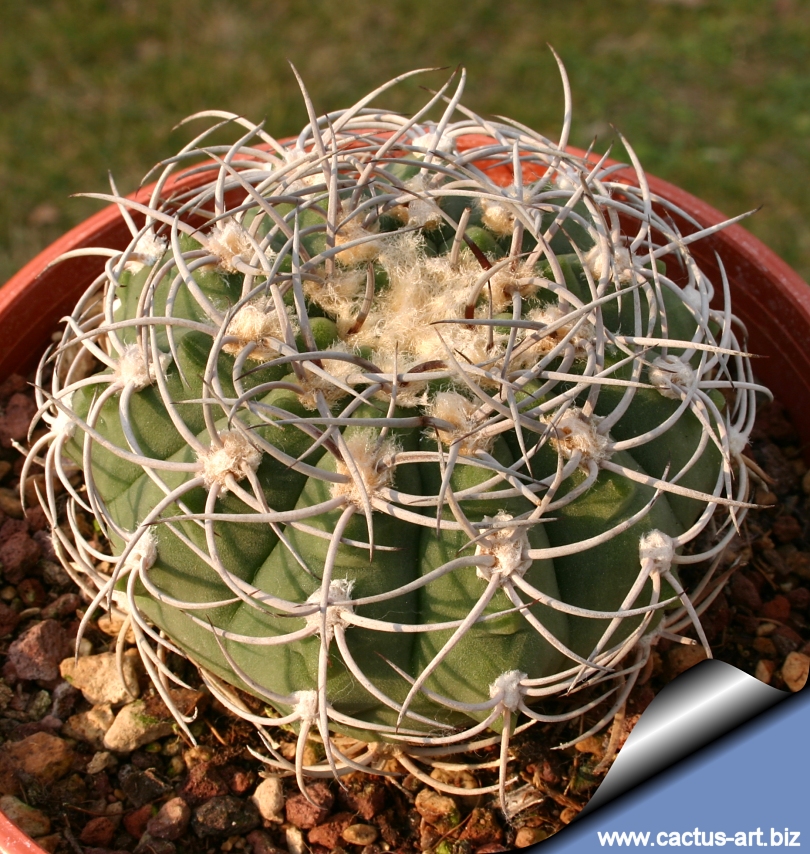|
|
|

Gymnocalycium castellanodsii WR715 Buenos Aires to
La Rioja, Argentina
The spines are very strong and impressive.
|
|
Cultivation:
Summer-growing and pretty easy, water regularly in summer, and keep
rather dry in winter. However it can handle excessive water to little
water. It grows well in full sun or half sun, too (but in
full sun it will form stronger spines).
Propagation: Seeds (it seldom produces offsets)
|
|


Advertising
|
|
|
|
|
Family:
Cactaceae (Cactus
Family)
Scientific name: Gymnocalycium castellanosii Backeberg
1936.
in Backeberg et Knuth, Kaktus - ABC, p. 287, 416, 1935
Origin: Cordoba, Argentina (South of La Rioja, East of San Juan
And west of Cordoba)
Habitat: It is found on granite or on red
sandstone mountains in scarce and almost deprived of nutrients soil,
with summer daily temperatures raising above 40° C.
Conservation status: Listed in
CITES appendix 2.
Common English Names include: Long horn
Etymology: Named after Dr. Alberto
Castellanos (1897-1968) Argentinean botanist and specialist in
Cactaceae and Breliaceae. it was assistant to Carlos Spegazzini
at Buenos Aires museum and in Cordoba, from 1955 onwards in Brazilian
exile..
The genus name "Gymnocalycium" comes from the Greek for
"naked calyx" referring to the flower buds bearing no hair or
spines.
Synonyms:
- Gymnocalycium
ferox
(Backeberg)
Slaba nom. inval. (Art.41.3b)
Kaktusy 20(4): 77-83 (1984) und 20(5): 99-104
(1984).not validly
published
- Gymnocalycium borzingianum Shutz
1977
- Gymnocalycium acorrugatum J.G.
Lambert 1988
Note: The taxonomy of this species is not
clear. The former synonym
Gymnocalycium ferox (Backeberg) Slaba
1984 seems to be
incorrect.
|
|
|
Description:
Solitary plant with fairly heavy spines bent backward in a distinctive
fashion.
Stem: Up to 15 cm in diameter an 10 cm tall, dull green or
bluish-green, apex depressed with confluent areoles forming a woolly
spineless disk.
Ribs: 10-12, with rounded sharply separated tubercles in young
specimens that progressively becomes almost flat in mature plant.
Spines:
Subulate, stout, thick and straight or
slightly curving,
all whitish, greyish or brownish, with a darker tip, up to 2,5 cm
long.
Radial spines: 5-7(-8)
Central spines: 0-2
Flower Colour: Bell-shaped or funnelform, up to 4,5 cm in
diameter, white to very light pink with a pink or reddish throat.
Fruit: Spherical or slightly ovoidal green. |
|
Seed
Collecting: Permit
fruit to
ripen.
Fruit must be significantly
overripe before harvesting seed; clean and dry seeds
|
|